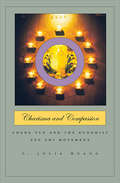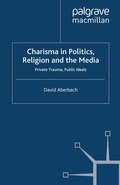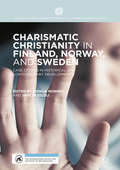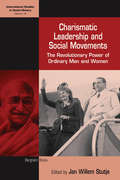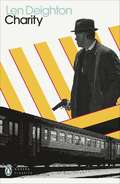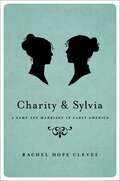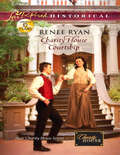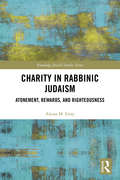- Table View
- List View
Chariot in Indian History
by U.P. ThapliyalThe invention and development of the chariot around the third millennium revolutionized the art of warfare and dominated the battlefields for some 3000 years. It seems to have evolved in the borderlands between the steppes and the riverlands. It is believed that the Āryan borrowed the idea of chariot from Sumerians around 2000 bc.It is presumed that these Āryans entered Iran and departed in three branches. One marches westward towards Syria, another eastward towards India and a third stays back in Iran. The absence of chariot in Indus valley civilization suggests that chariot arrived in India with Āryans, who settled here around 1500 bc. They used it as a lethal war machine to conquer the natives. The Chariot has played a vital role in Indian warfare through the ages, spanning over Vedic, Epic, and Puranic times, as attested to by literary and archaeological evidence. The Turk invasion marked by the dominance of cavalry arm brought the curtain down on chariot as a war machine. However, it survived in the Indian milieu in some other incarnations.
The Charioteer of Delphi: Book 12 (The Roman Mysteries #Bk. 12)
by Caroline LawrenceSeptember AD 80. Flavia and her friends go to Rome to celebrate the Festival of Jupiter at Senator Cornix's town house. When a famous racehorse goes missing, Nubia sets out to recover it. The four friends find themselves caught up in a plot against one of the rival factions, the Greens. Who is trying to sabotage the charioteers? Could it be an inside job, or someone with a grudge from long ago? And how many men and horses will die before the killer is caught?
Charisma and Compassion: Cheng Yen and the Buddhist Tzu Chi Movement
by C. Julia HuangThe Venerable Cheng-yen is an unassuming Taiwanese Buddhist nun who leads a worldwide social welfare movement with five million devotees in over thirty countries—with its largest branch in the United States. Tzu-Chi (Compassion Relief) began as a tiny, grassroots women's charitable group; today in Taiwan it runs three state-of-the-art hospitals, a television channel, and a university. Cheng-yen, who has been nominated for the Nobel Peace Prize, is a leader in Buddhist peace activism and has garnered recognition by Business Week as an entrepreneurial star. Based on extensive fieldwork in Taiwan, Malaysia, Japan, and the United States, this book explores the transformation of Tzu-Chi. C. Julia Huang offers a vivid ethnography that examines the movement’s organization, its relationship with NGOs and humanitarian organizations, and the nature of its Buddhist transnationalism, which is global in scope and local in practice. Tzu-Chi's identity is intimately tied to its leader, and Huang illuminates Cheng-yen's successful blending of charisma and compassion and the personal relationship between leader and devotee that defines the movement. This important book sheds new light on religion and cultural identity and contributes to our understanding of the nature of charisma and the role of faith-based organizations.
Charisma in Politics, Religion and the Media: Private Trauma, Public Ideals
by D. AberbachWhat are the origins of charisma? Are these the same in the various forms of public life, in politics and the media as well as in religion? In this new and radical interpretation of charisma, David Aberbach argues that the basis of charisma in all its forms must be found in the often-obscure symbolic intersection between the inner world of the charismatic and external social and political reality. As illustrations of various facets of this argument, he provides general analyses of charisma in politics, religion and the media as well as individual studies of Churchill, Hitler, Krishnamurti, Bialik and Chaplin.
The Charisma of Distant Places: Travel and Religion in the Early Middle Ages (Studies in Medieval History and Culture)
by Courtney LuckhardtThis cultural history of early medieval travel and religion reveals how movement affected society, demonstrating the connectedness of people and regions between 500 and 850 CE. In The Charisma of Distant Places, Courtney Luckhardt enriches our understanding of migration through her examination of religious movement. Vertical links to God and horizontal links to distant regions identified religious travelers – both men and women – as holy, connected to the human and the divine across physical and spiritual distances. Using textual sources, material culture, and place studies, this project is among the first to contextualize the geographic and temporal movement of early medieval people to reveal the diversity of religious travel, from the voluntary journeys of pilgrims to the forced travel of Christian slaves. Luckhardt offers new ways of understanding ideas about power, holiness, identity, and mobility during the transformation of the Roman world in the global Middle Ages. By focusing on the religious dimensions of early medieval people and the regions they visited, this book addresses probing questions, including how and why medieval people communicated and connected with one another across boundaries, both geographical and imaginative.
The Charisma of Distant Places: Travel and Religion in the Early Middle Ages (Studies in Medieval History and Culture)
by Courtney LuckhardtThis cultural history of early medieval travel and religion reveals how movement affected society, demonstrating the connectedness of people and regions between 500 and 850 CE. In The Charisma of Distant Places, Courtney Luckhardt enriches our understanding of migration through her examination of religious movement. Vertical links to God and horizontal links to distant regions identified religious travelers – both men and women – as holy, connected to the human and the divine across physical and spiritual distances. Using textual sources, material culture, and place studies, this project is among the first to contextualize the geographic and temporal movement of early medieval people to reveal the diversity of religious travel, from the voluntary journeys of pilgrims to the forced travel of Christian slaves. Luckhardt offers new ways of understanding ideas about power, holiness, identity, and mobility during the transformation of the Roman world in the global Middle Ages. By focusing on the religious dimensions of early medieval people and the regions they visited, this book addresses probing questions, including how and why medieval people communicated and connected with one another across boundaries, both geographical and imaginative.
Charismatic Christianity in Finland, Norway, and Sweden: Case Studies in Historical and Contemporary Developments
by Jessica Moberg Jane SkjoldliThis is open access under a CC BY 4.0 licenseThe history of Charismatic Christianity in the Nordic countries reaches as far back as Pentecostalism itself. The bounds of these categories remain a topic of discussion, but Nordic countries have played a vital role in developing this rapidly spreading form of world-wide Christianity. Until now, research on global Charismatic Christianity has largely overlooked the region. This book addresses and analyzes its historical and contemporary trajectories in Finland, Norway, and Sweden. Through a selection of cases written by Nordic scholars from various disciplines, it demonstrates historical and contemporary diversity as well as interconnections between local, national, and global currents. Highlighting change and continuity, the anthology reveals new aspects of Charismatic Christianity.
Charismatic Christianity in Finland, Norway, and Sweden: Case Studies in Historical and Contemporary Developments
by Jessica Moberg Jane SkjoldliThis is open access under a CC BY 4.0 licenseThe history of Charismatic Christianity in the Nordic countries reaches as far back as Pentecostalism itself. The bounds of these categories remain a topic of discussion, but Nordic countries have played a vital role in developing this rapidly spreading form of world-wide Christianity. Until now, research on global Charismatic Christianity has largely overlooked the region. This book addresses and analyzes its historical and contemporary trajectories in Finland, Norway, and Sweden. Through a selection of cases written by Nordic scholars from various disciplines, it demonstrates historical and contemporary diversity as well as interconnections between local, national, and global currents. Highlighting change and continuity, the anthology reveals new aspects of Charismatic Christianity.
Charismatic Leadership and Social Movements: The Revolutionary Power of Ordinary Men and Women (International Studies in Social History #19)
by Jan Willem StutjeMuch of the writing on charisma focuses on specific traits associated with exceptional leaders, a practice that has broadened the concept of charisma to such an extent that it loses its distinctiveness – and therefore its utility. More particularly, the concept’s relevance to the study of social movements has not moved beyond generalizations. The contributors to this volume renew the debate on charismatic leadership from a historical perspective and seek to illuminate the concept’s relevance to the study of social movements. The case studies here include such leaders as Mahatma Gandhi; the architect of apartheid, Daniel F. Malan; the heroine of the Spanish Civil War, Dolores Ibarruri (la pasionaria); and Mao Zedong. These charismatic leaders were not just professional politicians or administrators, but sustained a strong symbiotic relationship with their followers, one that stimulated devotion to the leader and created a real group identity.
The Charismatic Movement in Taiwan from 1945 to 1995: Clashes, Concord, and Cacophony (Christianity and Renewal - Interdisciplinary Studies)
by Judith C.P. LinThis book presents a comprehensive account of the historical development of the Charismatic Movement in Taiwan, placing it within the context of Taiwan’s religious and political history. Judith C. P. Lin unearths invaluable sources of the Japan Apostolic Mission, the Full Gospel Business Men’s Fellowship International Formosa Chapter, and Jean Stone Willans’ short stay in Taiwan in 1968. Lin describes and analyzes how the efforts of 1970s charismatic missionaries in Taiwan—including Pearl Young, Nicholas Krushnisky, Donald Dale, Allen J. Swanson, and Ross Paterson—shaped the theological convictions of later Taiwanese charismatic leaders. She also explores significant developments in the Taiwanese Church which contributed to the gradual and widespread recognition of the Charismatic Movement in Taiwan from 1980 to 1995. Lin offers a thorough treatment of history, reconfigures historiography from a Taiwanese perspective, and challenges the academic circle to take seriously the “Taiwanese consciousness” when engaging Taiwan’s history.
Charity (Penguin Modern Classics)
by Len DeightonA BERNARD SAMSON NOVEL'The master of espionage writing at his brilliant best' Mail on SundayWith the Cold War drawing to a close in the East, Bernard Samson is still haunted by the events that have turned his life upside down over the last ten years. But when he takes a train from Moscow to Berlin, he stumbles across a clue that may lead him to the truth at last - even though, in finding the answers, he could lose everything. Bringing the 'Faith, Hope and Charity' trilogy, and Bernard Samson's story, to a stunning conclusion, this final volume brilliantly shows the human cost of the spying game.'The series represents a magnificent achievement in the field of espionage writing and Samson remains one of the great spies' Irish Times
Charity and Lay Piety in Reformation London, 1500–1620 (St Andrews Studies in Reformation History)
by Claire S. SchenThe degree to which the English Protestant Reformation was a reflection of genuine popular piety as opposed to a political necessity imposed by the country's rulers has been a source of lively historical debate in recent years. Whilst numerous arguments and documentary sources have been marshalled to explain how this most fundamental restructuring of English society came about, most historians have tended to divide the sixteenth century into pre and post-Reformation halves, reinforcing the inclination to view the Reformation as a watershed between two intellectually and culturally opposed periods. In contrast, this study takes a longer and more integrated approach. Through the prism of charity and lay piety, as expressed in the wills and testaments taken from selected London parishes, it charts the shifting religious ideas about salvation and the nature and causes of poverty in early modern London and England across a hundred and twenty year period. Studying the evolution of lay piety through the long stretch of the period 1500 to 1620, Claire Schen unites pre-Reformation England with that which followed, helping us understand how 'Reformations' or a 'Long Reformation' happened in London. Through the close study of wills and testaments she offers a convincing cultural and social history of sixteenth century Londoners and their responses to religious innovations and changing community policy.
Charity and Lay Piety in Reformation London, 1500–1620 (St Andrews Studies in Reformation History)
by Claire S. SchenThe degree to which the English Protestant Reformation was a reflection of genuine popular piety as opposed to a political necessity imposed by the country's rulers has been a source of lively historical debate in recent years. Whilst numerous arguments and documentary sources have been marshalled to explain how this most fundamental restructuring of English society came about, most historians have tended to divide the sixteenth century into pre and post-Reformation halves, reinforcing the inclination to view the Reformation as a watershed between two intellectually and culturally opposed periods. In contrast, this study takes a longer and more integrated approach. Through the prism of charity and lay piety, as expressed in the wills and testaments taken from selected London parishes, it charts the shifting religious ideas about salvation and the nature and causes of poverty in early modern London and England across a hundred and twenty year period. Studying the evolution of lay piety through the long stretch of the period 1500 to 1620, Claire Schen unites pre-Reformation England with that which followed, helping us understand how 'Reformations' or a 'Long Reformation' happened in London. Through the close study of wills and testaments she offers a convincing cultural and social history of sixteenth century Londoners and their responses to religious innovations and changing community policy.
Charity and Sylvia: A Same-Sex Marriage in Early America
by Rachel Hope ClevesConventional wisdom holds that same-sex marriage is a purely modern innovation, a concept born of an overtly modern lifestyle that was unheard of in nineteenth century America. But as Rachel Hope Cleves demonstrates in this eye-opening book, same-sex marriage is hardly new. Born in 1777, Charity Bryant was raised in Massachusetts. A brilliant and strong-willed woman with a clear attraction for her own sex, Charity found herself banished from her family home at age twenty. She spent the next decade of her life traveling throughout Massachusetts, working as a teacher, making intimate female friends, and becoming the subject of gossip wherever she lived. At age twenty-nine, still defiantly single, Charity visited friends in Weybridge, Vermont. There she met a pious and studious young woman named Sylvia Drake. The two soon became so inseparable that Charity decided to rent rooms in Weybridge. In 1809, they moved into their own home together, and over the years, came to be recognized, essentially, as a married couple. Revered by their community, Charity and Sylvia operated a tailor shop employing many local women, served as guiding lights within their church, and participated in raising their many nieces and nephews. Charity and Sylvia is the intimate history of their extraordinary forty-four year union. Drawing on an array of original documents including diaries, letters, and poetry, Cleves traces their lives in sharp detail. Providing an illuminating glimpse into a relationship that turns conventional notions of same-sex marriage on their head, and reveals early America to be a place both more diverse and more accommodating than modern society might imagine, Charity and Sylvia is a significant contribution to our limited knowledge of LGBT history in early America.
Charity and Sylvia: A Same-Sex Marriage in Early America
by Rachel Hope ClevesConventional wisdom holds that same-sex marriage is a purely modern innovation, a concept born of an overtly modern lifestyle that was unheard of in nineteenth century America. But as Rachel Hope Cleves demonstrates in this eye-opening book, same-sex marriage is hardly new. Born in 1777, Charity Bryant was raised in Massachusetts. A brilliant and strong-willed woman with a clear attraction for her own sex, Charity found herself banished from her family home at age twenty. She spent the next decade of her life traveling throughout Massachusetts, working as a teacher, making intimate female friends, and becoming the subject of gossip wherever she lived. At age twenty-nine, still defiantly single, Charity visited friends in Weybridge, Vermont. There she met a pious and studious young woman named Sylvia Drake. The two soon became so inseparable that Charity decided to rent rooms in Weybridge. In 1809, they moved into their own home together, and over the years, came to be recognized, essentially, as a married couple. Revered by their community, Charity and Sylvia operated a tailor shop employing many local women, served as guiding lights within their church, and participated in raising their many nieces and nephews. Charity and Sylvia is the intimate history of their extraordinary forty-four year union. Drawing on an array of original documents including diaries, letters, and poetry, Cleves traces their lives in sharp detail. Providing an illuminating glimpse into a relationship that turns conventional notions of same-sex marriage on their head, and reveals early America to be a place both more diverse and more accommodating than modern society might imagine, Charity and Sylvia is a significant contribution to our limited knowledge of LGBT history in early America.
Charity and the Great Hunger in Ireland: The Kindness of Strangers
by Christine KinealyThe Great Irish Famine was one of the most devastating humanitarian disasters of the nineteenth century. In a period of only five years, Ireland lost approximately 25% of its population through a combination of death and emigration. How could such a tragedy have occurred at the heart of the vast, and resource-rich, British Empire?Charity and the Great Hunger in Ireland explores this question by focusing on a particular, and lesser-known, aspect of the Famine: that being the extent to which people throughout the world mobilized to provide money, food and clothing to assist the starving Irish. This book considers how, helped by developments in transport and communications, newspapers throughout the world reported on the suffering in Ireland, prompting funds to be raised globally on an unprecedented scale. Donations came from as far away as Australia, China, India and South America and contributors emerged from across the various religious, ethnic, social and gender divides. Charity and the Great Hunger in Ireland traces the story of this international aid effort and uses it to reveal previously unconsidered elements in the history of the Famine in Ireland.
Charity and the Great Hunger in Ireland: The Kindness of Strangers
by Christine KinealyThe Great Irish Famine was one of the most devastating humanitarian disasters of the nineteenth century. In a period of only five years, Ireland lost approximately 25% of its population through a combination of death and emigration. How could such a tragedy have occurred at the heart of the vast, and resource-rich, British Empire?Charity and the Great Hunger in Ireland explores this question by focusing on a particular, and lesser-known, aspect of the Famine: that being the extent to which people throughout the world mobilized to provide money, food and clothing to assist the starving Irish. This book considers how, helped by developments in transport and communications, newspapers throughout the world reported on the suffering in Ireland, prompting funds to be raised globally on an unprecedented scale. Donations came from as far away as Australia, China, India and South America and contributors emerged from across the various religious, ethnic, social and gender divides. Charity and the Great Hunger in Ireland traces the story of this international aid effort and uses it to reveal previously unconsidered elements in the history of the Famine in Ireland.
Charity Girl: Gossip, scandal and an unforgettable Regency romance (Regency Romances Ser. #27)
by Georgette HeyerIf you love Bridgerton, you'll love Georgette Heyer!'The greatest writer who ever lived' Antonia Fraser'Utterly delightful' The Guardian'Utter, immersive escapism' Sophie Kinsella'Heyer's books are as incisively witty and quietly subversive as any of Jane Austen's' Joanne Harris'I've read her over and over and over again' Stephen Fry'Wonderful characters . . . rapturously romantic' Katie Fforde_______________________Charity Steane has nothing in the world but hope.Escaping a miserable life under her tyrannical aunt, she decides to take her chances with her estranged grandfather in London. Now it's just a matter of finding him... And as a 'charity girl', with no dowry and no options, hope can only get her so far.But with the help of the dashing and kind-hearted Desford and his dearest friend Hetta, it seems like Charity's fortunes might be about to change.That is, until the surprise appearance of a long-lost relative throws things into chaos, and suddenly the three friends find themselves surrounded by blackmail and scandal.Will their efforts to do right by each other plunge them all into ruin?_______________________Reader's love Charity Girl . . .***** 'Oh, Georgette Heyer! How I love your stories!'***** 'Highly entertaining.'***** 'This is a strong statement to make, but I'm going to go ahead and commit myself: I think this book might have my favourite couple in all of Heyer's Regencies thus far.'***** 'This was a beautifully written story. It had me laughing out loud so many times and yet was not farcical in the least - thank god!'***** 'Right book, right time.'
Charity House Courtship (Charity House #5)
by Renee RyanFOR THE CHILDREN Thanks to a troubled childhood, Laney O’Connor knows the struggles faced by the offspring of society’s most desperate women. These young innocents need a safe place, which Laney seeks to provide at Charity House. When foreclosure threatens her haven, she’ll let nothing stop her from keeping the orphanage open.
Charity in Rabbinic Judaism: Atonement, Rewards, and Righteousness (Routledge Jewish Studies Series)
by Alyssa M. GrayStudying the many ideas about how giving charity atones for sin and other rewards in late antique rabbinic literature, this volume contains many, varied, and even conflicting ideas, as the multiplicity must be recognized and allowed expression. Topics include the significance of the rabbis’ use of the biblical word "tzedaqah" as charity, the coexistence of the idea that God is the ultimate recipient of tzedaqah along with rabbinic ambivalence about that idea, redemptive almsgiving, and the reward for charity of retention or increase in wealth. Rabbinic literature’s preference for "teshuvah" (repentance) over tzedeqah to atone for sin is also closely examined. Throughout, close attention is paid to chronological differences in these ideas, and to differences between the rabbinic compilations of the land of Israel and the Babylonian Talmud. The book extensively analyzes the various ways the Babylonian Talmud especially tends to put limits on the divine element in charity while privileging its human, this-worldly dimensions. This tendency also characterizes the Babylonian Talmud’s treatment of other topics. The book briefly surveys some post-Talmudic developments. As the study fills a gap in existing scholarship on charity and the rabbis, it is an invaluable resource for scholars and clergy interested in charity within comparative religion, history, and religion.
Charity in Rabbinic Judaism: Atonement, Rewards, and Righteousness (Routledge Jewish Studies Series)
by Alyssa M. GrayStudying the many ideas about how giving charity atones for sin and other rewards in late antique rabbinic literature, this volume contains many, varied, and even conflicting ideas, as the multiplicity must be recognized and allowed expression. Topics include the significance of the rabbis’ use of the biblical word "tzedaqah" as charity, the coexistence of the idea that God is the ultimate recipient of tzedaqah along with rabbinic ambivalence about that idea, redemptive almsgiving, and the reward for charity of retention or increase in wealth. Rabbinic literature’s preference for "teshuvah" (repentance) over tzedeqah to atone for sin is also closely examined. Throughout, close attention is paid to chronological differences in these ideas, and to differences between the rabbinic compilations of the land of Israel and the Babylonian Talmud. The book extensively analyzes the various ways the Babylonian Talmud especially tends to put limits on the divine element in charity while privileging its human, this-worldly dimensions. This tendency also characterizes the Babylonian Talmud’s treatment of other topics. The book briefly surveys some post-Talmudic developments. As the study fills a gap in existing scholarship on charity and the rabbis, it is an invaluable resource for scholars and clergy interested in charity within comparative religion, history, and religion.
The Charity of War: Famine, Humanitarian Aid, and World War I in the Middle East
by Melanie S. TanielianWith the exception of a few targeted aerial bombardments of the city's port, Beirut and Mount Lebanon did not see direct combat in World War I. Yet civilian casualties in this part of the Ottoman Empire reached shocking heights, possibly numbering half a million people. No war, in its usual understanding, took place there, but Lebanon was incontestably war-stricken. As a food crisis escalated into famine, it was the bloodless incursion of starvation and the silent assault of fatal disease that defined everyday life. The Charity of War tells how the Ottoman home front grappled with total war and how it sought to mitigate starvation and sickness through relief activities. Melanie S. Tanielian examines the wartime famine's reverberations throughout the community: in Beirut's municipal institutions, in its philanthropic and religious organizations, in international agencies, and in the homes of the city's residents. Her local history reveals a dynamic politics of provisioning that was central to civilian experiences in the war, as well as to the Middle Eastern political landscape that emerged post-war. By tracing these responses to the conflict, she demonstrates World War I's immediacy far from the European trenches, in a place where war was a socio-economic and political process rather than a military event.
Charity, Philanthropy and Reform: From the 1690s to 1850
by Hugh Cunningham Joanna InnesThe essays in this volume explore continuities and changes in the role of philanthropic organizations in Europe and North America in the period around the French Revolution. They aim to make connections between research on the early modern and late modern periods, and to analyze policies towards poverty in different countries within Europe and across the Atlantic. Cunningham and Innes highlight the new role for voluntary organizations emerging in the late eighteenth century and draws out the implications of this for received accounts of the development of welfare states.
Charlemagne
by Roger CollinsCharlemagne remains one of the most compelling figures in European history. In this lively, vivid portrait of an extraordinary monarch and his achievements, Roger Collins profiles the most powerful and significant ruler in Western Europe between the end of the Roman Empire and the Italian Renaissance. While his achievements were in some ways ephemeral (after all, his great Empire soon broke up), he can still clearly be seen as the figure who transformed the nature of Europe and ushered in a period which has an explicit and comprehensible connection with our own.The reign of Charlemagne (768-814) saw the unification under his rule of many areas of France, Italy, Germany, Spain and central Europe as part of his attempt to create a single European-wide state. He revived the office of emperor in the West and his achievements inspired a succession of both military conquerors and would-be unifiers of Europe up to the present day, earning him the name, `Father of Europe'.
Charlemagne
by Johannes FriedWhen the legendary Frankish king and emperor Charlemagne died in 814 he left behind a dominion and a legacy unlike anything seen in Western Europe since the fall of Rome. Johannes Fried paints a compelling portrait of a devout ruler, a violent time, and a unified kingdom that deepens our understanding of the man often called the father of Europe.


